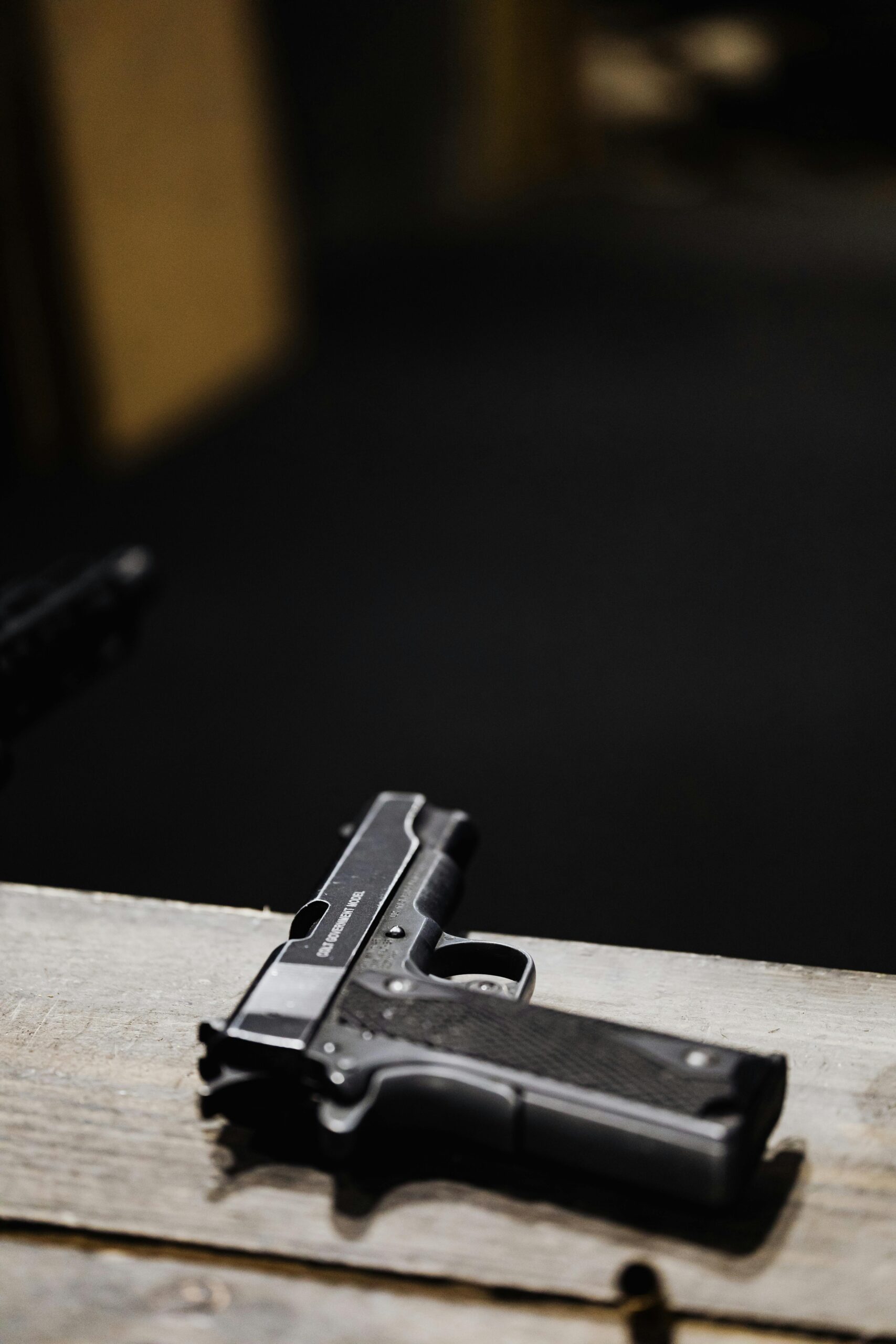Australia is known for its stunning landscapes and vibrant culture, but did you know that its gun laws are some of the strictest in the world? Understanding Australian gun laws is crucial for anyone interested in firearms, whether you’re a seasoned enthusiast or a curious newcomer. Have you ever wondered how these regulations impact gun ownership and hunting practices? With recent discussions surrounding gun safety and compliance, staying informed is more important than ever. From registration requirements to usage restrictions, navigating the complexities of the law can be daunting. That’s why we’ve put together this comprehensive guide to help you grasp the essentials of firearm regulations in Australia. Are you compliant? Do you know the penalties for violations? Equip yourself with the knowledge to ensure your safety and adherence to the law. Whether you’re looking to buy a gun, participate in shooting sports, or simply want to understand your rights and responsibilities, this article will provide you with vital insights. Don’t miss out—dive in to learn how you can stay safe and compliant with Australia’s firearm laws today!
Understanding Australia’s Gun Laws: 5 Essential Facts for Safe Ownership and Compliance
Understanding Australia’s Gun Laws: 5 Essential Facts for Safe Ownership and Compliance
Australia’s gun laws is often seen as strict, but they are actually designed to promote safety and responsible ownership. For anyone considering firearm ownership in Australia, it’s crucial to grasp the basics of these laws. Here’s five essential facts that will help you navigate through the complexities of Australian gun regulations.
Historical Background of Gun Laws in Australia
After the Port Arthur massacre in 1996, Australia implemented some of the most stringent gun laws in the world. This tragic event led to a national outcry for reform, resulting in the National Firearms Agreement (NFA). The NFA established standards for firearm ownership, licensing, and storage, which drastically changed the landscape of gun ownership. It is important to understand that these laws were not just reactionary; they aimed to create a safer environment for all Australians.
Types of Firearm Licenses
In Australia, there are several categories of firearm licenses, and each type correspond to different uses and classes of firearms. Here’s a rundown of the main licenses:
- Category A: Includes air rifles, rimfire rifles, and shotguns.
- Category B: Centerfire rifles, and some shotguns.
- Category C: Semi-automatic rimfire rifles, and shotguns for specific uses.
- Category D: Semi-automatic centerfire rifles and shotguns, highly restricted.
- Category H: Handguns, with strict controls on ownership.
Each license has its own requirements and restrictions, and applicants must demonstrate a genuine reason for owning a firearm, such as hunting or sport shooting. It is illegal to own a gun simply for personal protection in Australia.
The Licensing Process
Obtaining a firearm license in Australia is a detailed process that involves several steps. You must first complete a firearms safety course, which is mandatory for all applicants. After that, the steps generally include:
- Application: Fill out a form and provide personal information.
- Background Check: Police will conduct a thorough check of your criminal history.
- Waiting Period: There is often a mandatory waiting period, which can vary from state to state.
- Approval: If successful, you’ll receive your license, but it may come with conditions.
It’s important to keep in mind that the process can take several weeks or even months. Each state has its own regulations, so it’s crucial to check local laws to avoid delays.
Safe Storage and Transport
One of the cornerstones of Australian gun laws is the requirement for safe storage and transport of firearms. Owners must ensure that firearms are stored securely to prevent unauthorized access. Here are some key points regarding storage:
- Locked Cabinets: Firearms must be kept in a locked cabinet that meets specific Australian standards.
- Ammunition Storage: Ammunition should be stored separately from the firearm.
- Transporting Firearms: When transporting firearms, they must be unloaded, and in a secure manner.
Failing to adhere to these storage and transport requirements can lead to severe penalties, including license revocation and criminal charges.
Penalties for Non-Compliance
Australia takes gun law violations seriously. Depending on the severity of the infraction, penalties can be quite harsh. Here’s a list of potential consequences you might face:
- Fines: Ranging from hundreds to thousands of dollars.
- License Suspension: Temporary or permanent loss of your firearm license.
- Criminal Charges: Serious violations can lead to criminal charges, which may result in imprisonment.
It’s essential to remain informed and compliant with the laws to avoid these repercussions.
Owning a firearm in Australia can be a responsible and rewarding endeavor, but it comes with significant responsibilities. Understanding the laws surrounding firearms is crucial for anyone interested in owning a gun. By following the regulations, you not only ensure compliance but also contribute to the overall safety of the community. If you have more questions or need legal assistance regarding firearm ownership, consider consulting with professionals who specialize in this area. Being informed is the first step towards responsible and lawful gun ownership.
Top 7 Common Misconceptions About Gun Ownership in Australia: What You Need to Know
In Australia, the topic of gun ownership often sparks heated debates and misconceptions. Many people think they understand the laws and regulations surrounding firearms, but the reality is often quite different. Misunderstandings about the legal framework can lead to confusion and even legal trouble for those who aren’t informed. So let’s dive into the top 7 common misconceptions about gun ownership in Australia and clarify what you really need to know about Australian gun laws, especially if you’re considering owning a firearm.
1. All Guns Are Banned in Australia
One of the biggest misconceptions is that gun ownership is entirely prohibited in Australia. This is not true. While the country has strict regulations, certain types of firearms can still be legally owned. For instance, licensed individuals can own shotguns and rifles for purposes such as hunting or sport shooting. It’s important to note that handguns are more heavily regulated and typically require a special license.
2. You Can Buy a Gun Without a License
Many people mistakenly believe they can purchase a firearm without going through the proper licensing process. In reality, all firearm purchases require a license. To obtain a license, individuals must meet specific criteria, including a background check, a minimum age requirement, and safety training. Not having a license can lead to severe legal consequences.
3. Firearm Registration Is Optional
Some think that registering their firearms is optional. This is false. In Australia, it is mandatory to register all firearms. The registration process is crucial for public safety and helps law enforcement track firearms. Failure to register a firearm can result in hefty fines and even imprisonment.
4. The Gun Buyback Program Eliminated All Firearms
After the Port Arthur massacre in 1996, Australia implemented a gun buyback program that led to the destruction of over 600,000 firearms. While this program significantly reduced the number of guns in circulation, it didn’t eliminate gun ownership entirely. Many firearms still exist, and legal ownership remains possible under regulated conditions.
5. Only Criminals Own Guns
There’s a common belief that only criminals possess firearms. In reality, many law-abiding citizens legally own guns for various reasons including sport, hunting, and personal protection. The majority of gun owners in Australia comply with laws and regulations, and responsible ownership is emphasized through education and training.
6. You Can Use a Gun for Self-Defense
A significant misconception is that firearms can be used freely for self-defense. In Australia, the laws regarding self-defense with a firearm are strict. You can only use a firearm in self-defense if you genuinely believe your life is in imminent danger and have no other means of protection. This makes using a gun for self-defense a complex legal issue and often not a viable option.
7. Gun Laws Are the Same Across All States
People often think gun laws are uniform throughout Australia. However, each state and territory has its own specific laws and regulations regarding firearms. For example, the requirements to obtain a gun license in New South Wales can differ significantly from those in Queensland. Always check local laws to ensure compliance.
What You Need to Know for Safety and Compliance
Understanding Australian gun laws is crucial for anyone considering ownership. Here’s a quick breakdown of what is generally required:
- Age Requirement: Must be at least 18 years old.
- Background Checks: Mandatory checks to ensure the applicant has no criminal record.
- Safety Training: Completion of a recognized gun safety course.
- Medical Assessments: Some states require a medical assessment to determine if the applicant can own a firearm safely.
- Registration: All firearms must be registered with the local authorities.
Key Takeaways
- Gun ownership in Australia is legal but heavily regulated.
- Misconceptions about gun laws can lead to legal issues.
- Always seek updated information on laws as they vary by state.
In summary, being well-informed about Australian gun laws is essential for safety and compliance. Misunderstandings can not only lead to legal trouble but also compromise personal safety. Whether you’re a current gun owner or thinking about becoming one, understanding the regulations will help you navigate the complexities of gun ownership in Australia effectively.
Navigating the Licensing Process: A Step-by-Step Guide to Complying with Australian Gun Laws
Navigating the complex world of Australian gun laws can be a daunting task for those looking to obtain a firearm license. The regulations are strict, and understanding each step of the licensing process is crucial for compliance and safety. Whether you’re a resident or just visiting, knowing what you need to do is important.
Understanding Australian Gun Laws
Australian gun laws emerged after the Port Arthur massacre in 1996, which led to a nationwide reform. The primary goal of these laws is to ensure public safety while allowing responsible gun ownership. Each state and territory has its own regulations, but there are several common elements that everyone should be aware of.
Key Points About Gun Ownership in Australia
- License Required: Anyone wishing to own a gun must obtain a license. This involves a series of steps and checks.
- Types of Licenses: There are various types of licenses based on the purpose of gun ownership, including recreational, hunting, and sport shooting.
- Safety Training: Applicants usually need to complete a firearm safety course. This is designed to educate potential gun owners about the risks and responsibilities.
- Background Checks: Extensive background checks are conducted, which includes criminal history, mental health evaluations, and sometimes even personal references.
- Storage Requirements: Gun owners must comply with strict storage regulations. This includes using secure safes and ensuring that firearms are not accessible to unauthorized individuals.
Step-by-Step Guide to Obtaining a Firearm License
Determine Your Eligibility: Make sure you meet the age and residency requirements. Generally, you must be at least 18 years old and a resident of the state where you are applying.
Complete a Firearm Safety Course: Enroll in a safety training program recognized by your state’s firearms registry. This course often covers safe handling, storage, and legal responsibilities.
Gather Required Documents: You will need to submit various documents with your application. Common requirements include:
- Proof of identity (driver’s license, passport)
- Proof of residency
- Certificate of completion from the safety course
Submit Your Application: Fill out the application form accurately; any mistakes could delay the process. It’s important to submit your application to the relevant state authority.
Undergo a Background Check: After submission, a thorough background check will be conducted. This may take several weeks.
Wait for Approval: Once your background check is complete, you will be notified of the outcome. If approved, you will receive your license.
Purchase and Register Your Firearm: After obtaining your license, you can purchase a firearm. Don’t forget to register it with the appropriate authorities.
Safety and Compliance: What You Need to Know
Understanding safety regulations is just as important as knowing the licensing process. Australian gun laws place a strong emphasis on safe storage and handling of firearms. Here are some essential safety tips:
- Always treat a gun as if it’s loaded. Never assume it’s safe.
- Store firearms securely in a locked safe or cabinet.
- Use trigger locks to prevent accidental discharge.
- Educate family members about gun safety, especially children.
Differences Between States and Territories
While there are national guidelines, each Australian state and territory has its own specific regulations. Here’s a brief comparison:
| State/Territory | License Type | Minimum Age | Safety Course Required? |
|---|---|---|---|
| New South Wales | Yes | 18 | Yes |
| Victoria | Yes | 18 | Yes |
| Queensland | Yes | 18 | Yes |
| Western Australia | Yes | 18 | Yes |
| South Australia | Yes | 18 | Yes |
| Tasmania | Yes | 18 | Yes |
| Northern Territory | Yes | 18 | Yes |
| Australian Capital Territory | Yes | 18 | Yes |
Practical Examples of Gun Ownership
For instance, if you are a sports shooter in New South Wales, you will need to apply for a Category H license, which permits the ownership of handguns. You must demonstrate a genuine reason for ownership, which could include participation in a recognized shooting sport.
Another example is if you are a farmer needing a firearm for pest control. In this case, you might apply for a Category A or B license, depending on the type of firearm required.
Navigating the licensing process for firearms in Australia can seem overwhelming, but breaking it down into manageable steps can help. Remember to always prioritize safety and education in your journey to compliance with Australian gun laws. With careful planning and adherence to the regulations, responsible gun ownership can be achieved, ensuring safety for yourself and your community.
The Impact of Recent Changes to Australian Gun Laws: What Gun Owners Must Understand
In recent years, Australia has seen major changes to its gun laws, causing a stir among gun owners and enthusiasts alike. Understanding these updates is crucial for anyone who owns or intends to acquire firearms in Australia. The impact of these changes can’t be overstated, as they influence everything from ownership regulations to safety compliance. This article will explore the recent alterations to Australian gun laws, what you need to know for safety and compliance, and how these laws affect gun owners.
Historical Context of Australian Gun Laws
After the Port Arthur massacre in 1996, Australia implemented some of the strictest gun laws in the world. The National Firearms Agreement (NFA) was established to regulate the ownership, sale, and use of firearms. This agreement led to a significant reduction in gun-related deaths and mass shootings. However, laws have continued evolve, reflecting societal attitudes towards gun ownership and safety.
Recent Changes to Australian Gun Laws
In 2023, several key updates were made to Australian gun laws. These changes aim to enhance public safety and ensure responsible gun ownership. Here’s a list of some of the most important modifications:
- Increased Penalties: Stricter penalties for illegal possession of firearms or ammunition. This includes heavier fines and longer prison sentences.
- Registration Requirements: New rules around firearm registration, making it mandatory for gun owners to renew their registration every five years.
- Licensing Revisions: Changes to the licensing system, including more thorough background checks and mandatory safety training for new applicants.
- Storage Regulations: Updated storage requirements for firearms, emphasizing secure storage to prevent unauthorized access, particularly by children.
- Gun Buyback Programs: Continued support for voluntary gun buyback programs aimed at reducing the number of firearms in circulation.
What Gun Owners Must Understand
With these changes, it’s essential for gun owners to be aware of their rights and responsibilities. Here are some key points to consider:
- Compliance is Critical: Staying informed about current laws can prevent legal issues. Non-compliance could lead to severe consequences.
- Stay Updated: Laws can change frequently, so gun owners should regularly check resources from local law enforcement or government websites.
- Training and Safety: Mandatory training programs are not just a formality; they provide valuable knowledge about safe handling and storage of firearms.
- Community Involvement: Engaging in local gun clubs or communities can help you stay informed about best practices and legal changes.
Practical Examples of Compliance
For instance, if you own a firearm, you must ensure it is properly registered. If you fail to renew your registration, you could face hefty fines or even jail time. Furthermore, if your firearm is not stored according to the new regulations, you might be held liable if it is accessed by an unauthorized person. It’s crucial to document all compliance efforts, such as receipts for storage solutions or records of training courses.
Understanding Safety Measures
Safety is a major aspect of gun ownership in Australia. Here are some safety measures gun owners should adopt:
- Secure Storage: Use gun safes or lock boxes that meet Australian standards.
- Regular Maintenance: Ensure firearms are regularly checked and maintained to ensure they are in good working condition.
- Educate Family Members: Teach others in your home about the importance of gun safety and proper handling.
Comparison of Gun Laws in Different States
It’s also important to note that while there are national laws in Australia, individual states may have their own specific regulations. Below is a simplified comparison:
| State | Registration Requirement | Licensing Requirement | Storage Requirement |
|---|---|---|---|
| New South Wales | Yes | Yes | Strict |
| Victoria | Yes | Yes | Very Strict |
| Queensland | Yes | Yes | Moderate |
| Western Australia | Yes | Yes | Strict |
The Future of Gun Laws in Australia
The landscape of gun laws in Australia continues to shift. Advocacy groups on both sides of the debate are pushing for changes that reflect their views on gun ownership. Whether it be for stricter regulations or more freedom for gun owners, staying informed is key.
Gun owners in Australia must navigate a complex legal framework that demands attention to detail and a commitment to safety. As these laws evolve, understanding their implications not only ensures compliance but also promotes responsible ownership. Therefore, it’s crucial to remain educated and proactive in adapting to these changes.
Safety First: 10 Expert Tips for Responsible Gun Ownership Under Australian Law
Owning a firearm is a serious responsibility, and in Australia, the laws surrounding gun ownership are strict and designed to promote safety. If you are considering owning a gun or already have one, understanding the Australian gun laws is crucial. Here are ten expert tips to help you navigate this complex landscape while ensuring you remain compliant and safe.
1. Understand the Basics of Australian Gun Laws
Australian gun laws were significantly tightened after the 1996 Port Arthur massacre. This incident prompted the government to implement the National Firearms Agreement (NFA), which aimed to increase public safety by reducing firearm-related violence. Key elements include registration requirements, licensing, and restrictions on certain types of firearms.
2. Know Your License Types
In Australia, there are several types of gun licenses depending on the intended use of the firearm. Here’s a quick breakdown:
- Category A: Air rifles, rimfire rifles, and shotguns
- Category B: Centerfire rifles
- Category C: Semi-automatic rimfire rifles and shotguns for primary producers
- Category D: Semi-automatic centerfire rifles and shotguns
- Category H: Handguns
Each category requires a specific license and has different regulations.
3. Complete a Safety Course
Before you buy a gun, you must complete a firearms safety training course. This is like a rite of passage for responsible gun ownership. The course will teach you about safe handling, storage, and local laws. Many states require proof of completion before issuing a license.
4. Secure Your Firearm Properly
It’s important to store your firearm in a secure manner. The law requires that guns be stored in a locked cabinet or safe which meets safety standards. This helps to prevent unauthorized access, especially from children.
5. Regular Maintenance is Key
Maintaining your firearm is not just about performance; it also about safety. Regular cleaning and inspections can prevent malfunctions that could lead to accidents. Always refer to the manufacturer’s guidelines for proper care and maintenance procedures.
6. Buy from Licensed Dealers
When purchasing a firearm, always buy from a licensed dealer. This not only ensures that the gun is legal but also that it meets safety standards. Illegal firearms can lead to severe penalties, including imprisonment.
7. Stay Informed on Legal Changes
Gun laws can change, and it’s your responsibility to stay informed about any new regulations that may affect your ownership status. Following local news or joining a gun owners’ association can help you keep up to date.
8. Practice Responsible Shooting
When out shooting, whether it’s for sport or hunting, always practice responsible behavior. This means respecting other people, being aware of your surroundings, and following all range rules. Being a responsible shooter helps maintain the public’s perception of gun ownership.
9. Keep Accurate Records
Maintaining a log of your firearms, including purchase dates, serial numbers, and maintenance history, is crucial. This can be helpful if your firearm is ever lost or stolen, and it also may be required for compliance with local laws.
10. Know the Consequences of Non-Compliance
Failure to comply with Australian gun laws can have serious consequences. Penalties can include hefty fines, loss of your firearm license, and even jail time. Understanding the risks associated with non-compliance is essential for any gun owner.
Summary of Key Points
- National Firearms Agreement: Established after the 1996 massacre, it tightened gun ownership laws.
- Types of Licenses: There are various licenses depending on the type of firearm.
- Safety Course Requirement: Mandatory training before obtaining a license.
- Storage Laws: Firearms must be stored securely to prevent unauthorized access.
- Regular Maintenance: Essential for safety and functionality.
- Licensed Dealers: Always buy from licensed sources to ensure legality.
- Legal Awareness: Stay informed about changes in legislation.
- Responsible Shooting: Follow safety protocols when using firearms.
- Record Keeping: Maintain accurate records for compliance and safety.
- Legal Consequences: Be aware of the penalties for non-compliance.
Owning a firearm in Australia comes with a lot of responsibilities, and adhering to the laws is paramount for both personal safety and the safety of others. By following these expert tips, you can ensure that you are a responsible gun owner, fully compliant with Australian gun laws. Remember, knowledge and preparedness are your best allies in navigating this complex landscape.
Conclusion
In conclusion, Australia’s gun laws reflect a comprehensive and rigorous approach to firearm regulation, prioritizing public safety while respecting responsible ownership. Following the tragic Port Arthur massacre in 1996, the government enacted significant reforms, including a mandatory buyback program and strict licensing requirements. These measures have resulted in a notable decline in gun-related violence and fatalities, highlighting the effectiveness of stringent regulations. Moreover, the cultural shifts towards viewing firearms as tools for sport rather than personal defense have further reinforced these laws. While debates around gun rights and individual freedoms continue, it is essential for Australians to engage in constructive discussions about firearm legislation to ensure that safety remains paramount. As we consider the balance between rights and public safety, let us advocate for responsible gun ownership and support policies that protect our communities. Your voice matters; participate in local discussions and stay informed about the ongoing evolution of gun laws in Australia.



